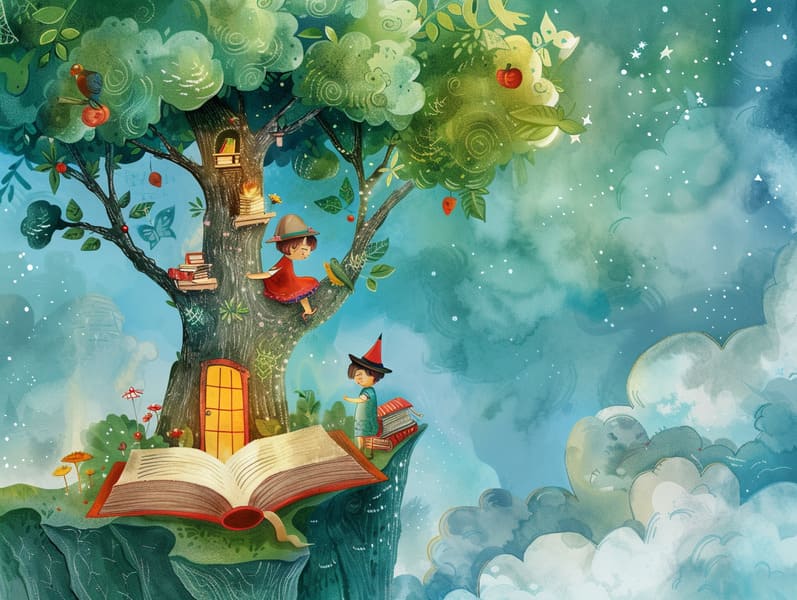The Formation of Grimm's Fairy Tales and Its Undying Fascination.
The Formation of Grimm's Fairy Tales and Its Undying Fascination.
Blog Article

Traditional fairy tales have deep roots. These tales have been shared from one generation to the next centuries before they were ever recorded. They originated from a variety of backgrounds, including Eastern traditions. They were initially narrated among adults, often carrying themes and messages concerning the societal norms and beliefs of the time.
The famous Grimm duo, Jacob and Wilhelm Grimm, were among the first to compile many of these beloved stories. Their compilation, "Grimm's Fairy Tales," included classics like "Ashenputtel," "The Story of Hansel and Gretel," and "Snow-White and Rose-Red," which have since become essentials in the world of traditional fairy tales. Similarly, Hans Christian Andersen's fanciful stories, such as "The Story of the Little Mermaid," and "The Little Duckling," have captivated hearts worldwide, securing their place in the pantheon of famous fairy tales.
Though they are centuries old, these stories remain as relevant as ever, especially as children's bedtime stories. These magical stories are now available in different formats, including gorgeously illustrated books, captivating animations, and internet fairy tales.
Their unwavering allure can be credited to several whimsical characteristics:
Significant Morals: Traditional fairy tales often offer important moral lessons. Narratives like "The Story of the Boy Who Cried Wolf" teach the virtue of sincerity, while "The Hare and the Tortoise" emphasize the qualities of tenacity and unassuming nature. These stories offer kids clear distinctions between correct and incorrect, molding their moral compass in a gentle yet lasting way.
Compassion and Knowledge: Traditional fairy tales frequently present heroines facing trials and tribulations, urging readers to identify with their struggles and cheer for their triumphs. For instance, "The Story of Beauty and the Beast" emphasizes the value of appreciating inner worth to acknowledge the true character of a being, fostering insight and knowledge.
Cultural Comprehension: Many ancient fairy tales are infused with the cultural contexts from which they emerged. Delving into these tales can provide enlightening views into different beliefs, fostering a sense of world understanding and acknowledgment.
Creativity and Imagination: The extraordinary elements in old fairy tales—mythical entities—promote children’s creative minds. These stories carry readers to supernatural realms, inspiring inventive thinking and a sense of mystery that persists a lifetime.
Timeless fairy tales are not only mesmerizing but also illuminating. They act as charming tools in promoting various cognitive and emotional skills in kids. When old fairy tales are spoken, they develop language acquisition by offering new terms and complicated sentence structures. This practice also boosts hearing abilities and attentiveness, as the young remain attentive, expectant to see what happens next.
Furthermore, talking about the themes and characters of ancient fairy tales can sharpen logical thinking and critical thinking. Children are led to notice patterns, forecast, and catch on to cause and effect. These reflections also further kids convey their thoughts and feelings, boosting their emotional intelligence.
In today’s high-tech era, the proliferation of digital fairy tales has made these narratives more attainable than ever. Internet resources and web apps feature large libraries of popular fairy tales that can be accessed or listened on anytime, anywhere. Fairy tales narrated are particularly liked, offering an interactive method for little ones to be a part of these bewitching tales. Audio stories and spoken videos move characters and settings to life, often accompanied by charming soundtracks and soundtracks that augment the narrative adventure.
The lasting appeal of classic fairy tales lies in their ability to change to modern society while retaining their core messages. Contemporary renditions of these narratives often spotlight more multicultural characters and modern settings, making them understandable to today’s audience. However, the core values of guts, compassion, and even-handedness remain unchanged, continuing to move young readers of all ages.
Old fairy tales also offer a sense of calm and closeness. They provide a ordered narrative with a transparent beginning, middle, and end, often concluding with the culmination of conflicts and the triumph of truth over falsehood. This reliability can be heartening for young ones, bringing a sense of security in an variable world.
Classic fairy tales continue to mesmerize and guide new generations, maintaining their enchantment and applicability in modern society. As nighttime more info stories for kids, they afford a perfect blend of charm and enlightenment, fostering moral values, empathy, and creativity. The proliferation of web-based fairy tales and the in demand status of fairy tales spoken certify that these traditional fairy tales remain within reach to new generations.
By upholding and passing on these tales, we continue to appreciate the rich tapestry of storytelling and cultural heritage. Whether you are accessing a richly illustrated book, exploring a electronic library, or listening on an narrated book, the mystique of bedtime fairy tales is always within reach. These narratives reveal of the ageless magic of tales and its ability to gather us across generations and cultures.
Even if you are discovering a beautifully illustrated book, exploring a online collection, or listening on an spoken story, the spell of old fairy tales is always within reach.
These narratives convey of the invariable force of tales and its ability to unite us across centuries and lands, making a tie that delights and instructs alike.